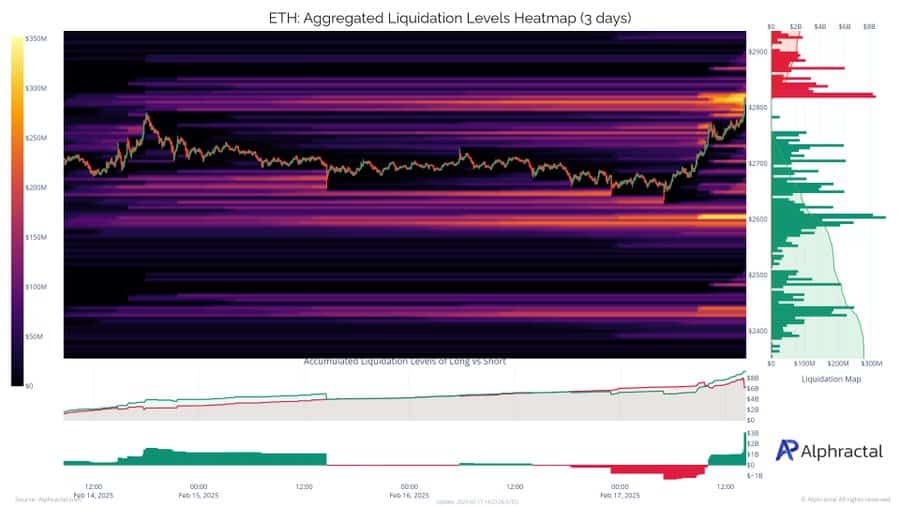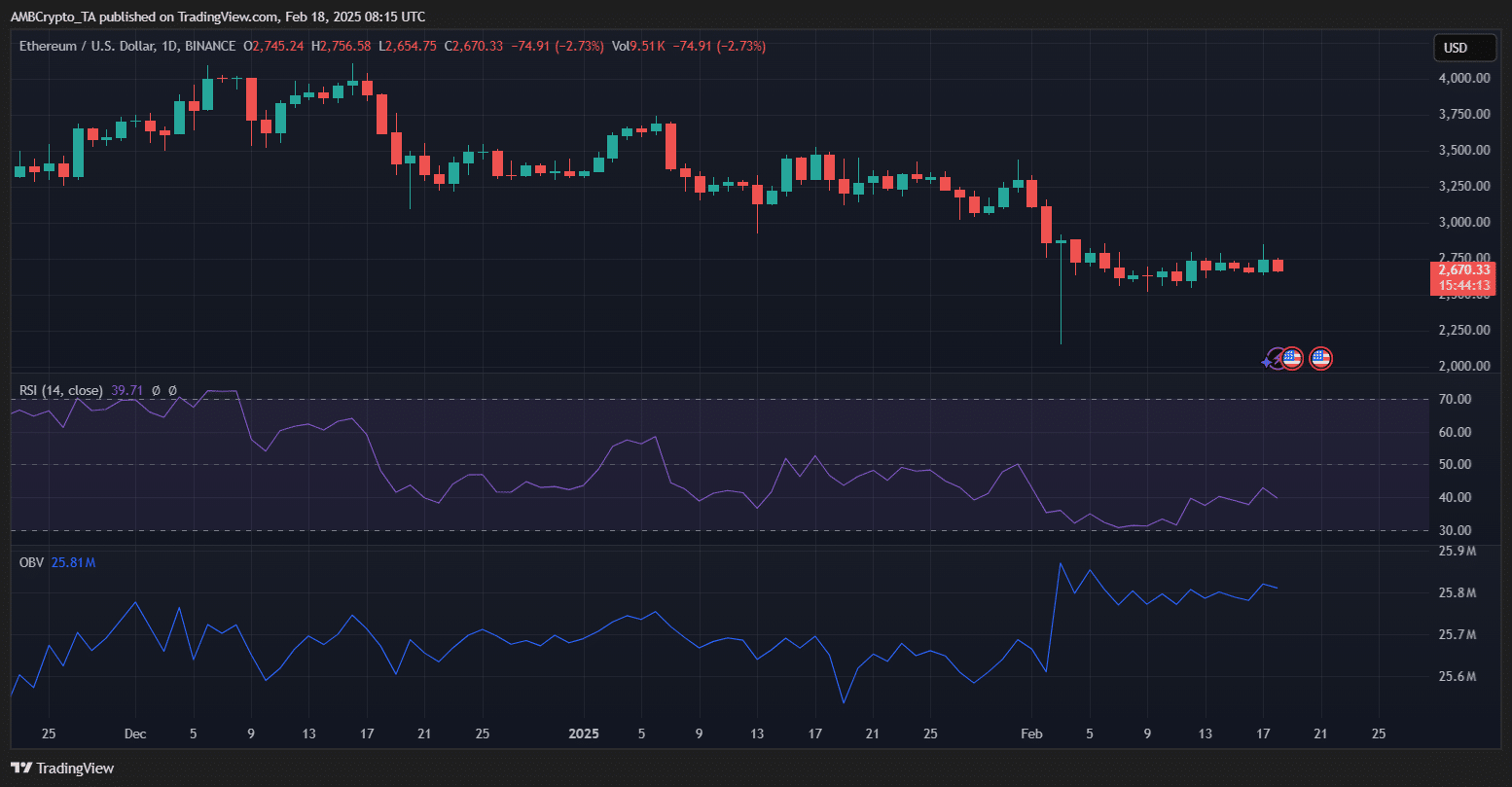| COINOTAG recommends • Exchange signup |
| 💹 Trade with pro tools |
| Fast execution, robust charts, clean risk controls. |
| 👉 Open account → |
| COINOTAG recommends • Exchange signup |
| 🚀 Smooth orders, clear control |
| Advanced order types and market depth in one view. |
| 👉 Create account → |
| COINOTAG recommends • Exchange signup |
| 📈 Clarity in volatile markets |
| Plan entries & exits, manage positions with discipline. |
| 👉 Sign up → |
| COINOTAG recommends • Exchange signup |
| ⚡ Speed, depth, reliability |
| Execute confidently when timing matters. |
| 👉 Open account → |
| COINOTAG recommends • Exchange signup |
| 🧭 A focused workflow for traders |
| Alerts, watchlists, and a repeatable process. |
| 👉 Get started → |
| COINOTAG recommends • Exchange signup |
| ✅ Data‑driven decisions |
| Focus on process—not noise. |
| 👉 Sign up → |
-
Ethereum’s recent price surge and the subsequent short position liquidations juxtapose sharply with Bitcoin’s stagnant performance, creating a unique market dynamic.
-
This divergence highlights the impact of geopolitical factors and investor sentiment on different cryptocurrencies, raising questions about their future trajectories.
-
According to a recent analysis from COINOTAG, “The short interest spike indicates a fragile sentiment, which could amplify volatility in the coming weeks.”
Ethereum’s price surge triggers significant liquidations, while Bitcoin remains stagnant, increasing market volatility amid geopolitical tensions.
Understanding Ethereum’s Surge: $2,800 Milestone and Liquidation Trends
Ethereum’s rally towards the $2,800 mark has dominated the crypto landscape, prompting a drastic liquidation of short positions. Remarkably, short interest has surged over 40% in just one week, marking an extraordinary uptick exceeding 500% since November 2024. This trend indicates a pervasive bearish sentiment among traders, urging many to close out positions as ETH peaks.
If Ethereum cannot maintain this upward trajectory, the $2,600 level emerges as a critical support zone to observe. A failure to hold above this threshold could precipitate further liquidations, amplifying market volatility as traders reevaluate their strategies amidst ongoing fluctuations.
Comparative Analysis: Ethereum vs. Bitcoin Divergence
This recent surge underscores a pronounced divergence between Ethereum and Bitcoin. While Ethereum gains traction, Bitcoin’s price remains in a state of stagnation, showcasing the distinct market behaviors of the two largest cryptocurrencies by market capitalization.
| COINOTAG recommends • Professional traders group |
| 💎 Join a professional trading community |
| Work with senior traders, research‑backed setups, and risk‑first frameworks. |
| 👉 Join the group → |
| COINOTAG recommends • Professional traders group |
| 📊 Transparent performance, real process |
| Spot strategies with documented months of triple‑digit runs during strong trends; futures plans use defined R:R and sizing. |
| 👉 Get access → |
| COINOTAG recommends • Professional traders group |
| 🧭 Research → Plan → Execute |
| Daily levels, watchlists, and post‑trade reviews to build consistency. |
| 👉 Join now → |
| COINOTAG recommends • Professional traders group |
| 🛡️ Risk comes first |
| Sizing methods, invalidation rules, and R‑multiples baked into every plan. |
| 👉 Start today → |
| COINOTAG recommends • Professional traders group |
| 🧠 Learn the “why” behind each trade |
| Live breakdowns, playbooks, and framework‑first education. |
| 👉 Join the group → |
| COINOTAG recommends • Professional traders group |
| 🚀 Insider • APEX • INNER CIRCLE |
| Choose the depth you need—tools, coaching, and member rooms. |
| 👉 Explore tiers → |
Geopolitical influences, most notably recent tariffs imposed during the Trump administration, have fortified Bitcoin’s position as a perceived safe-haven asset. Conversely, Ethereum’s broader utility faces scrutiny amidst regulatory pressures, prompting hesitation from potential investors. Furthermore, Bitcoin Exchange-Traded Funds (ETFs) have amassed over $40 billion in institutional investments, contrasting sharply with the relatively modest inflows into Ethereum, further influencing market dynamics and supremacy.
The Liquidation Clusters Revealed: Analyzing the Heatmap
The aggregated liquidation heatmap for Ethereum vividly illustrates significant liquidation clusters forming around the $2,800 mark. These clusters correspond directly with the rapid price ascension, resulting in swift liquidations of short positions and revealing the immediate market vulnerabilities.
| COINOTAG recommends • Exchange signup |
| 📈 Clear interface, precise orders |
| Sharp entries & exits with actionable alerts. |
| 👉 Create free account → |
| COINOTAG recommends • Exchange signup |
| 🧠 Smarter tools. Better decisions. |
| Depth analytics and risk features in one view. |
| 👉 Sign up → |
| COINOTAG recommends • Exchange signup |
| 🎯 Take control of entries & exits |
| Set alerts, define stops, execute consistently. |
| 👉 Open account → |
| COINOTAG recommends • Exchange signup |
| 🛠️ From idea to execution |
| Turn setups into plans with practical order types. |
| 👉 Join now → |
| COINOTAG recommends • Exchange signup |
| 📋 Trade your plan |
| Watchlists and routing that support focus. |
| 👉 Get started → |
| COINOTAG recommends • Exchange signup |
| 📊 Precision without the noise |
| Data‑first workflows for active traders. |
| 👉 Sign up → |
Conversely, the $2,600 liquidation pool remains a critical area to monitor closely, as price fluctuations could potentially trigger substantial sell-offs from existing positions, particularly if market conditions reverse.

| COINOTAG recommends • Traders club |
| ⚡ Futures with discipline |
| Defined R:R, pre‑set invalidation, execution checklists. |
| 👉 Join the club → |
| COINOTAG recommends • Traders club |
| 🎯 Spot strategies that compound |
| Momentum & accumulation frameworks managed with clear risk. |
| 👉 Get access → |
| COINOTAG recommends • Traders club |
| 🏛️ APEX tier for serious traders |
| Deep dives, analyst Q&A, and accountability sprints. |
| 👉 Explore APEX → |
| COINOTAG recommends • Traders club |
| 📈 Real‑time market structure |
| Key levels, liquidity zones, and actionable context. |
| 👉 Join now → |
| COINOTAG recommends • Traders club |
| 🔔 Smart alerts, not noise |
| Context‑rich notifications tied to plans and risk—never hype. |
| 👉 Get access → |
| COINOTAG recommends • Traders club |
| 🤝 Peer review & coaching |
| Hands‑on feedback that sharpens execution and risk control. |
| 👉 Join the club → |
Source: Alphractal
Technical Indicators: A Cautionary Approach Required

Source: TradingView
As observed from Ethereum’s daily price chart, the current trading price at $2,670 reveals a slight bearish bias, marked by a 2.73% decrease at press time. The Relative Strength Index (RSI) is positioned at 39.71, suggesting a growing interest from buyers if this trend persists. However, the On-Balance Volume (OBV) metric at 25.81 million indicates limited buying strength, implying that selling pressure continues to dominate.
| COINOTAG recommends • Exchange signup |
| 📈 Clear control for futures |
| Sizing, stops, and scenario planning tools. |
| 👉 Open futures account → |
| COINOTAG recommends • Exchange signup |
| 🧩 Structure your futures trades |
| Define entries & exits with advanced orders. |
| 👉 Sign up → |
| COINOTAG recommends • Exchange signup |
| 🛡️ Control volatility |
| Automate alerts and manage positions with discipline. |
| 👉 Get started → |
| COINOTAG recommends • Exchange signup |
| ⚙️ Execution you can rely on |
| Fast routing and meaningful depth insights. |
| 👉 Create account → |
| COINOTAG recommends • Exchange signup |
| 📒 Plan. Execute. Review. |
| Frameworks for consistent decision‑making. |
| 👉 Join now → |
| COINOTAG recommends • Exchange signup |
| 🧩 Choose clarity over complexity |
| Actionable, pro‑grade tools—no fluff. |
| 👉 Open account → |
This ongoing consolidation around the $2,670 mark reflects ambiguity in market sentiment. A breakdown beneath this level could necessitate a reassessment among traders, particularly concerning the $2,600 liquidation pool. Conversely, a rebound will require robust volume to convincingly breach the $2,800 resistance.
Conclusion
In conclusion, the current dynamics between Ethereum and Bitcoin showcase a compelling narrative of volatility driven by external factors and market sentiment. As traders navigate this complex landscape, it’s crucial to remain vigilant around key technical levels while adapting strategies based on market developments. The evolving situation promises to provide both challenges and opportunities for cryptocurrency enthusiasts and investors alike.
| COINOTAG recommends • Members‑only research |
| 📌 Curated setups, clearly explained |
| Entry, invalidation, targets, and R:R defined before execution. |
| 👉 Get access → |
| COINOTAG recommends • Members‑only research |
| 🧠 Data‑led decision making |
| Technical + flow + context synthesized into actionable plans. |
| 👉 Join now → |
| COINOTAG recommends • Members‑only research |
| 🧱 Consistency over hype |
| Repeatable rules, realistic expectations, and a calmer mindset. |
| 👉 Get access → |
| COINOTAG recommends • Members‑only research |
| 🕒 Patience is an edge |
| Wait for confirmation and manage risk with checklists. |
| 👉 Join now → |
| COINOTAG recommends • Members‑only research |
| 💼 Professional mentorship |
| Guidance from seasoned traders and structured feedback loops. |
| 👉 Get access → |
| COINOTAG recommends • Members‑only research |
| 🧮 Track • Review • Improve |
| Documented PnL tracking and post‑mortems to accelerate learning. |
| 👉 Join now → |
| COINOTAG recommends • Members‑only research |
| 📌 Curated setups, clearly explained |
| Entry, invalidation, targets, and R:R defined before execution. |
| 👉 Get access → |
| COINOTAG recommends • Members‑only research |
| 🧠 Data‑led decision making |
| Technical + flow + context synthesized into actionable plans. |
| 👉 Join now → |
| COINOTAG recommends • Members‑only research |
| 🧱 Consistency over hype |
| Repeatable rules, realistic expectations, and a calmer mindset. |
| 👉 Get access → |
| COINOTAG recommends • Members‑only research |
| 🕒 Patience is an edge |
| Wait for confirmation and manage risk with checklists. |
| 👉 Join now → |
| COINOTAG recommends • Members‑only research |
| 💼 Professional mentorship |
| Guidance from seasoned traders and structured feedback loops. |
| 👉 Get access → |
| COINOTAG recommends • Members‑only research |
| 🧮 Track • Review • Improve |
| Documented PnL tracking and post‑mortems to accelerate learning. |
| 👉 Join now → |









